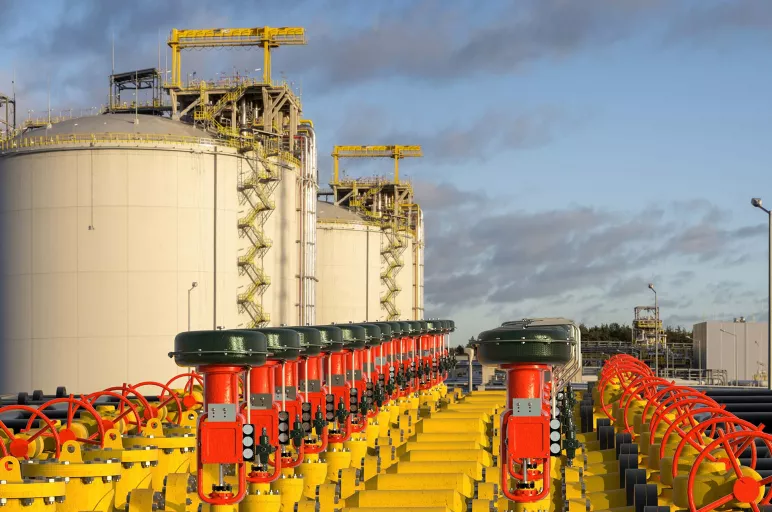
How to Optimize Oil & Gas Capex Planning Amid Russia-Ukraine War?
- Global supply shocks brought on by the Russia-Ukraine conflict have intensified the challenges of capex planning in the oil & gas sector
- Oil & gas executives looking to mitigate the impacts from war should aim to secure alternative sources of supply and focus on supply chain resilience
- Higher oil prices give oil & gas companies the opportunity to lay the foundation for long-term growth
March 26, 2022 | CAPEX
As the Russia-Ukraine war continues unabated, the West’s economic sanctions on Russia have resulted in an uncertain and mixed supply environment for the oil & gas sector.
Rising oil prices will incentivize a sector-wide increase in production to meet the demands of a tightening market, spurring capital expenditure (capex) for new plants and assets in the upstream, midstream and downstream segments of the oil and gas industry.
The impact of sanctions doesn’t end here.
Raw materials needed in building these capital assets have also experienced supply shocks.
Russia’s metal exports, essential to the oil & gas capital production process, make up a significant portion of global supply. Uncertainty, sanctions and looming export bans have choked supply and inflated prices (shown below), exacerbating the challenges involved in capex planning.
| Commodity | Russia’s Share of Global Exports1 (%) | % Increase in Price2 (Monthly, as on March 23) |
|---|---|---|
| Steel | 20% | 5.65% |
| Palladium | 7.3% | 5.47% |
| Nickel | 16% | 13.04% |
| Aluminum | 8% | 6.08% |
| Copper | 7% | 6.34% |
How should oil & gas executives approach capital planning?
When increasing capital investments now comes at a cost, the answer lies in the short term. Executives need to capitalize on cash flows generated from higher oil prices and fund asset-improving and asset-building initiatives to meet short-run capacity needs.
• Increase utility from existing infrastructure
Executives should favor a throughput capital budgeting approach. Rather than engaging in individual discounted cash-flow and risk-assessment exercises, oil & gas firms may be able to quickly increase the throughput of existing assets by improving capital utilization rates and minimizing variable costs.
This approach could shelter oil & gas firms from potential downside when the crisis resolves, oil prices fall and the global push for renewables resumes. Furthermore, an emphasis on throughput budgeting could save the time, money and resources needed to secure and qualify new suppliers.
• Secure and qualify alternative sources of supply when investing in new fixed capital
Prior to the outbreak of war on February 24, base metal inventories were already too low for markets to handle further disruptions to output. As a result, oil & gas executives need to carefully consider the relative importance of these metals in their segments of the industry and prioritize purchasing accordingly.
| Inputs | Industry Segment | Capital/Equipment Type |
|---|---|---|
| Steel Palladium Nickel Aluminum Copper |
Upstream: Exploration & Production | Drill pipes, wiring and cable, semi-conductor, and electronics control systems |
| Midstream: Processing, Storage & Transportation | Pipeline, wiring and cable, rotating equipment, pressure vessels, control systems, emissions catalyst, PVF | |
| Downstream: Refining Consumables | Emissions catalysts, rotating equipment, PVF, wiring and cable, control systems |
While oil & gas firms will face challenges in fulfilling their raw material needs, diversifying supplier bases across the following regions could help firms meet their requirements:
| Inputs | Alternative Regions of Supply |
|---|---|
| Steel | India, China, Vietnam |
| Palladium | South Africa, China, U.K. |
| Nickel | Canada, Papua New Guinea, Indonesia |
| Copper | Chile, Kazakhstan, Australia |
| Aluminum | Canada, Netherlands, U.A.E. |
How can supply chains build resilience?
It’s crucial that capital planners invest heavily in supplier qualification, pay close attention to the selection process, and implement strategies to develop a resilient supplier base.
Supplier qualification is a time-consuming but necessary step in securing alternative sources of supply for these metals. Executives will need to take extra care to ensure that key supplier management principles aren’t overlooked when shifting supply bases to new geographies.
The raw materials needed to produce oil & gas assets such as pipelines, PVF, rotating equipment and emissions catalysts need to meet strict specification requirements, so stakeholders will need to engage with Tier-2 and Tier-3 suppliers to ensure quality control and service levels throughout the supply chain.
Reinvest in capital for long-term growth
In the face of crisis, oil & gas organizations need to resist the temptation to let higher oil prices bankroll firm profits and instead reinvest in fixed and working capital.
Chief financial officers will need to strategically reassess their existing asset infrastructure, purchase raw materials from alternative sources and double down on efforts to qualify new suppliers. While capital investments will come at increased costs due to volatile commodity prices, higher oil prices give oil & gas executives the chance to lay the groundwork for long-term sustainable growth.
Authors: Siddharth Panandiker and Harsh Singh
Notes:
- Percentages are reflective of quantity, not value; figures represent share of Russia’s exports, not share of total global production
- Commodities - Live Quote Price Trading Data (tradingeconomics.com)



